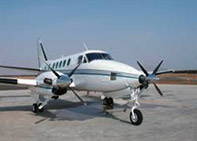A study by lead researcher Carsten Kulheim and his team from The Australian National University (ANU) shows oil from Australia’s gum (eucalyptus) trees can be used to produce sufficient low-carbon renewable jet fuel. The study was conducted at Oak Ridge National Laboratory, the University of Tennessee, and the University of Florida in the United States. Thus produced fuel can power 5% of the world’s aviation industry. As per the teams, calculations to have this much quantity of fuel, a plantation in 20 million hectares of eucalyptus species worldwide will be required. Presently, nearly the same amount of farming is done for the paper and pulp industry.
It is a proven fact from the data that aviation fuel/planes produce only 2% of global carbon emissions; this looks to be a minimal amount compared to the carbon emissions by other industries. But it is also a proven fact that it is tough to replace, or add to, aviation fuel as it has tremendous high-energy requirements. Renewable ethanol and biodiesel are found useful and successfully tried even for high-end automobiles as a replacement for gasoline. Still, they don’t have a high enough energy density even as an additive in aviation fuel.
During the research, monoterpenes’ compounds in eucalyptus oil were converted into very high-energy fuel suitable for jets and missiles too via a catalytic process. The jet fuel thus derived from the eucalyptus oil is expected to be close to carbon neutral. The team proves the technical side on an experimental basis in the laboratories. It now needs to be evaluated and researched and explored how to do this on an industrial scale.
Their study also included how to boost monoterpenes’ production to obtain industrial scales of jet fuel from these plants. This meant selecting appropriate eucalyptus species for plantation, genetic analysis, advanced molecular breeding, genetic engineering and improvements in harvesting the crop and processing of the oils. To improve the oil yields, it will be required to study more of the eucalyptus trees’ genetics, and understand how to use genetic breeding and genetic engineering. The oil is in the plants’ leaves; hence, while genetic engineering, this aspect of growing leaves in a short period needs to be addressed. All these possible avenues must be explored to make it a commercially viable alternative fuel/additive for the aviation industry.
Researchers strongly believe that this fuel can displace the amount of traditional fossil fuel aviation gas by between 5–10%.








1 Pingback